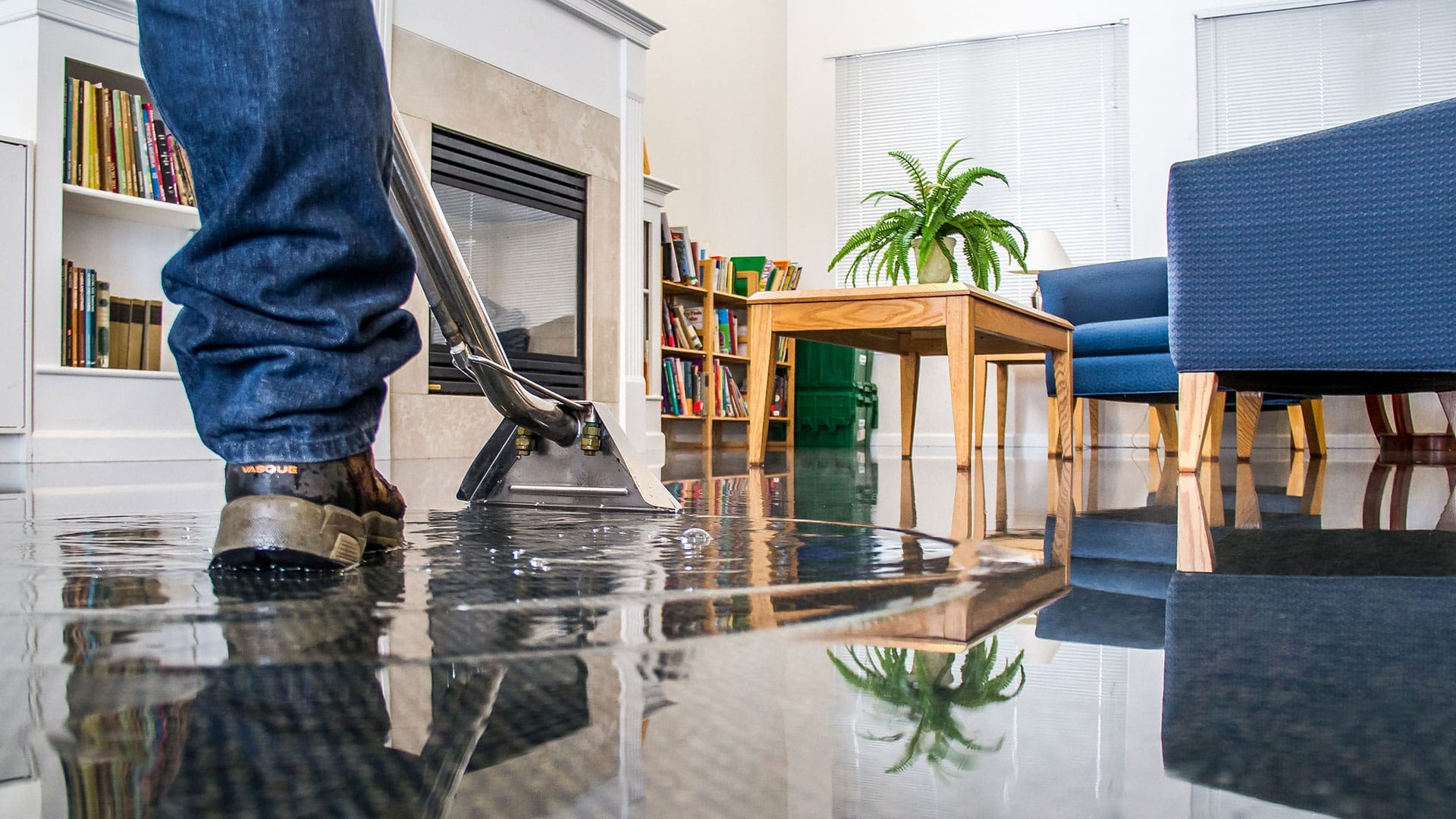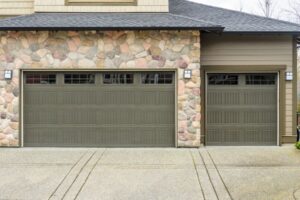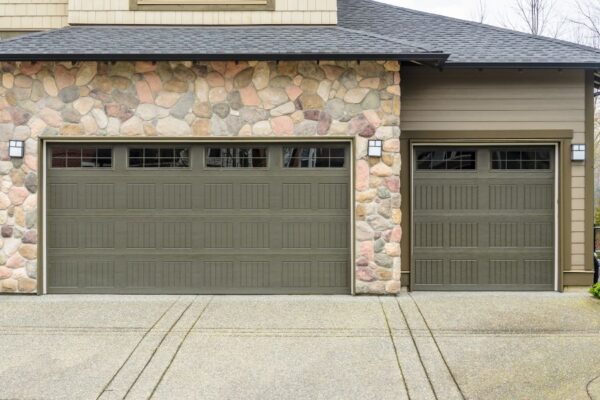Key Takeaways:
- Water damage can be caused by natural disasters or plumbing issues, so regular inspections and maintenance are important to prevent it.
- There are three types of water damage: clean water, gray water, and black water, with the latter two being highly contaminated and requiring professional handling.
- Signs of water damage include water stains, musty odors, warped materials, mold growth, peeling paint, increased water bills, and pooling water.
- Engage a licensed and insured water restoration company with 24/7 emergency services, experience, advanced equipment, positive reviews, and transparent pricing.
- The restoration process involves assessing the damage, water extraction, drying, cleaning, repairs, content clean-up, and a final inspection.
- Safely remove standing water, use proper drying methods and equipment, and prevent and treat mold growth after water damage.
- Restoration may require repairing structures, replacing damaged furniture, documenting damage for insurance, and implementing long-term prevention measures.
Understanding Water Damage and Its Effects
Water damage can occur in various ways and can have a significant impact on your home. Understanding the causes and effects of water damage is crucial in order to take appropriate preventive measures and effectively restore your home if damage occurs.
- The Causes of Water Damage and How to Prevent Them
Water damage can be caused by a variety of factors, including natural disasters such as floods, storms, or hurricanes, as well as plumbing issues like burst pipes, leaky roofs, or faulty appliances. To prevent water damage, it is important to regularly inspect your home for potential issues.
Here are some preventive measures you can take:
- Ensure proper drainage around your home by maintaining gutters and downspouts.
- Regularly check and maintain your plumbing system, including pipes, faucets, and water heaters.
- Install a sump pump in your basement or crawl space to prevent water accumulation.
- Insulate pipes to protect them from freezing and bursting during cold weather.
- Keep your roof in good condition, repairing any leaks or damage promptly.
- The Different Types of Water Damage and Their Impact on Your Home
Not all water damage is the same. Understanding the different types of water damage can help you assess the severity of the situation and determine the appropriate restoration methods.
The three main types of water damage are:
- Clean Water Damage: This type of water damage is caused by clean water sources, such as broken pipes or overflowing sinks. While clean water may not pose an immediate health risk, it can still cause damage if left untreated.
- Gray Water Damage: Gray water is slightly contaminated water that may contain a small amount of chemicals or bacteria. This can come from sources such as washing machines, dishwashers, or toilets with urine only. Gray water can cause illness or discomfort if ingested or exposed to for an extended period.
- Black Water Damage: Black water is highly contaminated and can pose serious health risks. It comes from sources such as sewage backups, flooding from rivers or streams, or water that has been standing for an extended period. Black water may contain pathogens, toxins, and other hazardous substances.
It is important to note that gray water and black water damage should always be handled by professionals due to the associated health risks.
- Recognizing the Signs of Water Damage in Your Home
Early detection of water damage is crucial in preventing further damage and costly repairs. Knowing the signs to look for can help you identify water damage in its early stages:
- Visible water stains or discoloration on walls, ceilings, or floors.
- Damp or musty odors indicating moisture accumulation.
- Warped or swollen materials, such as wood or drywall.
- Mold or mildew growth.
- Peeling or bubbling paint or wallpaper.
- Sudden increase in your water bill.
- Pooling or standing water in unexpected areas.
If you notice any of these signs, it is important to take immediate action to prevent further damage and address the underlying cause of the water intrusion.
The Water Restoration Process: What You Need to Know
When water damage occurs in your home, it is essential to engage the services of a professional water restoration in Cary. They have the expertise, equipment, and know-how to assess the extent of the damage and restore your home to its pre-loss condition.
- Finding the Right Water Restoration Company in Cary
When selecting a water restoration company, it is important to consider their experience, reputation, and certifications. Look for a company that is licensed and insured, as this ensures they meet industry standards and regulations.
Here are some qualities to look for in a water restoration company:
- 24/7 emergency services to respond promptly to water damage incidents.
- Experience in handling a wide range of water damage scenarios.
- Access to advanced equipment and technology for efficient restoration.
- Positive customer reviews and testimonials.
- Transparent pricing and clear communication throughout the restoration process.
- Assessing the Extent of the Water Damage in Your Home
Once you have engaged a water restoration company, they will conduct a thorough assessment of the damage to determine the appropriate restoration plan. This assessment involves:
- Identifying the source of the water intrusion and addressing it to prevent further damage.
- Inspecting affected areas for structural damage, mold growth, and other related issues.
- Documenting the extent of the damage through photographs and written reports for insurance purposes.
Based on this assessment, the restoration company will develop a comprehensive plan to restore your home.
- The Step-by-Step Process of Water Restoration
The water restoration process typically involves the following steps:
- Water Extraction: The restoration team will use specialized equipment, such as pumps and vacuums, to remove standing water from your home.
- Drying and Dehumidification: High-powered fans and dehumidifiers will be utilized to remove moisture from the air and surfaces, preventing further damage and mold growth.
- Cleaning and Sanitization: Affected areas will be thoroughly cleaned and sanitized to remove any contaminants and minimize health risks.
- Repairs and Restoration: Damaged structures, such as walls, floors, and ceilings, will be repaired or replaced, restoring your home’s integrity.
- Content Clean-up: Furniture, belongings, and other personal items will be cleaned and restored whenever possible.
- Final Inspection: The restoration team will conduct a final inspection to ensure that all water damage has been effectively addressed and your home is safe for occupancy.
Dealing with Water Damage: Tips and Techniques
While professional restoration services are essential for effectively restoring your home after water damage, there are some immediate steps you can take to minimize the damage before help arrives.
- How to Safely Remove Standing Water from Your Home
If it is safe to do so, you can begin the water removal process before professionals arrive:
- Turn off the electricity to prevent the risk of electric shock.
- Wear protective gear, such as rubber boots and gloves, to avoid exposure to contaminated water.
- Use buckets, mops, or a wet/dry vacuum to remove as much standing water as possible.
- Dispose of the water in a safe and sanitary manner.
However, it is important to remember that prolonged exposure to standing water may weaken structures, promote bacterial growth, and cause other health hazards. Therefore, it is advisable to seek professional assistance as soon as possible.
- Drying Out Your Home: Effective Methods and Equipment
Efficiently drying out your home is crucial to prevent further damage and the growth of mold and mildew. Professionals typically use advanced drying techniques and equipment, including:
- Air movers: These high-powered fans promote air circulation and aid in drying out wet spaces.
- Dehumidifiers: These devices help remove excess moisture from the air by condensing and collecting water vapor.
- Infrared cameras: Professionals may use these cameras to detect hidden moisture and ensure thorough drying.
- Thermal hygrometers: These instruments measure temperature and humidity levels to monitor the drying progress.
Attempting to dry out your home without the appropriate equipment and expertise can result in inadequate drying, leading to long-term damage and mold growth. It is best to leave this task to the professionals.
- Mold Remediation: Preventing and Treating Mold Growth after Water Damage
One of the major concerns after water damage is the potential growth of mold. Mold can begin to develop within 24-48 hours of water intrusion and can cause a variety of health issues, especially for those with respiratory conditions or weakened immune systems.
To prevent mold growth:
- Ensure proper ventilation in your home, especially in areas prone to moisture, such as bathrooms and kitchens.
- Promptly address any water leaks or issues to prevent moisture buildup.
- Monitor and control indoor humidity levels, aiming for levels below 50 percent.
If mold growth is detected, it is crucial to engage mold remediation professionals who can safely remove and treat the mold, preventing further spread and contamination.
Restoring Your Home: Reconstruction and Beyond
Restoring your home after water damage involves more than just drying out and cleaning up. It often requires necessary repairs and replacements to ensure your home is both structurally sound and visually appealing.
- Repairing Damaged Structures and Restoring Your Home’s Integrity
Professional restoration companies have the expertise to repair and restore water-damaged structures in your home. This may include:
- Replacing damaged drywall, ceiling tiles, or flooring.
- Repairing or replacing water-damaged cabinets, doors, or windows.
- Addressing any structural issues, such as weakened beams or foundations.
These repairs not only restore the functionality of your home but also ensure its long-term structural integrity.
- Restoring and Replacing Water-Damaged Furniture and Belongings
Water damage can also affect your furniture, electronics, and personal belongings. Depending on the extent of the damage, some items may be salvageable, while others may need to be replaced. Professional restoration companies can assess and provide guidance on what can be restored.
Here are some steps to take when dealing with water-damaged belongings:
- Remove items from the water-damaged area as soon as possible to prevent further absorption of moisture.
- Clean and sanitize salvageable items using appropriate methods and products.
- Consult with professionals about restoring electronics and appliances.
- Document the damage and keep records for insurance purposes.
Remember to prioritize your safety when handling water-damaged items, as they may have been exposed to harmful contaminants.
- Tips for Ensuring Long-Term Water Damage Prevention in Your Home
Preventing future water damage is essential to protect your home and minimize the risk of costly repairs and restoration. Here are some tips to help you prevent water damage:
- Regularly inspect and maintain your plumbing system, including pipes, fittings, and connections.
- Install water leak detection devices to alert you in case of leaks or pipe bursts.
- Ensure proper grading and drainage around your home’s foundation.
- Trim trees and shrubs near your home to prevent root intrusion into pipes.
- Regularly clean and maintain gutters and downspouts to prevent water from overflowing and causing damage.
- Consider installing a sump pump in your basement or crawl space to prevent water accumulation.
By implementing these preventive measures, you can significantly reduce the risk of water damage to your home.
Water damage can be devastating, but with the right knowledge and actions, you can effectively restore your home and prevent future damage. Always remember to seek professional assistance from reputable water restoration companies to ensure the best possible outcome for your home and your family’s safety.
FAQ
Question: What are the different types of water damage? – Water damage can be classified into three types: clean water damage, gray water damage, and black water damage. Clean water damage comes from sources like broken pipes and overflowing sinks, whereas gray water damage may contain chemicals or bacteria and often comes from appliances like washing machines and dishwashers. Black water damage is highly contaminated and poses serious health risks, coming from sources like sewage backups and flooding.
Question: How can I prevent water damage in my home? – Regular inspections and maintenance are key to preventing water damage. Ensure proper drainage around your home, maintain your plumbing system, install a sump pump, insulate pipes in cold weather, and keep your roof in good condition.
Question: What are the signs of water damage in a home? – Signs of water damage include water stains, musty odors, warped materials, mold growth, peeling paint, increased water bill, and pooling water.
Question: What should I look for in a water restoration company? – When choosing a water restoration company, look for one that offers 24/7 emergency services, has experience in handling various water damage scenarios, uses advanced equipment, has positive customer reviews, and provides transparent pricing.
Question: What is involved in the water restoration process? – The water restoration process includes assessing the damage, water extraction, drying, cleaning, repairs, content clean-up, and a final inspection.
Question: What can I do to minimize water damage before professionals arrive? – If safe to do so, you can remove standing water from your home using buckets, mops, or wet/dry vacuums. However, extended exposure to standing water is not recommended, and professional assistance should be sought as soon as possible.
Question: How can I safely prevent and treat mold growth after water damage? – To prevent mold growth, ensure proper ventilation, address water leaks promptly, and monitor and control indoor humidity levels. If mold growth is detected, it is important to engage mold remediation professionals for safe removal and treatment.
Question: What steps can I take to prevent future water damage in my home? – Regularly inspect and maintain your plumbing system, install water leak detection devices, ensure proper grading and drainage, trim trees and shrubs near your home, and clean and maintain gutters and downspouts.






